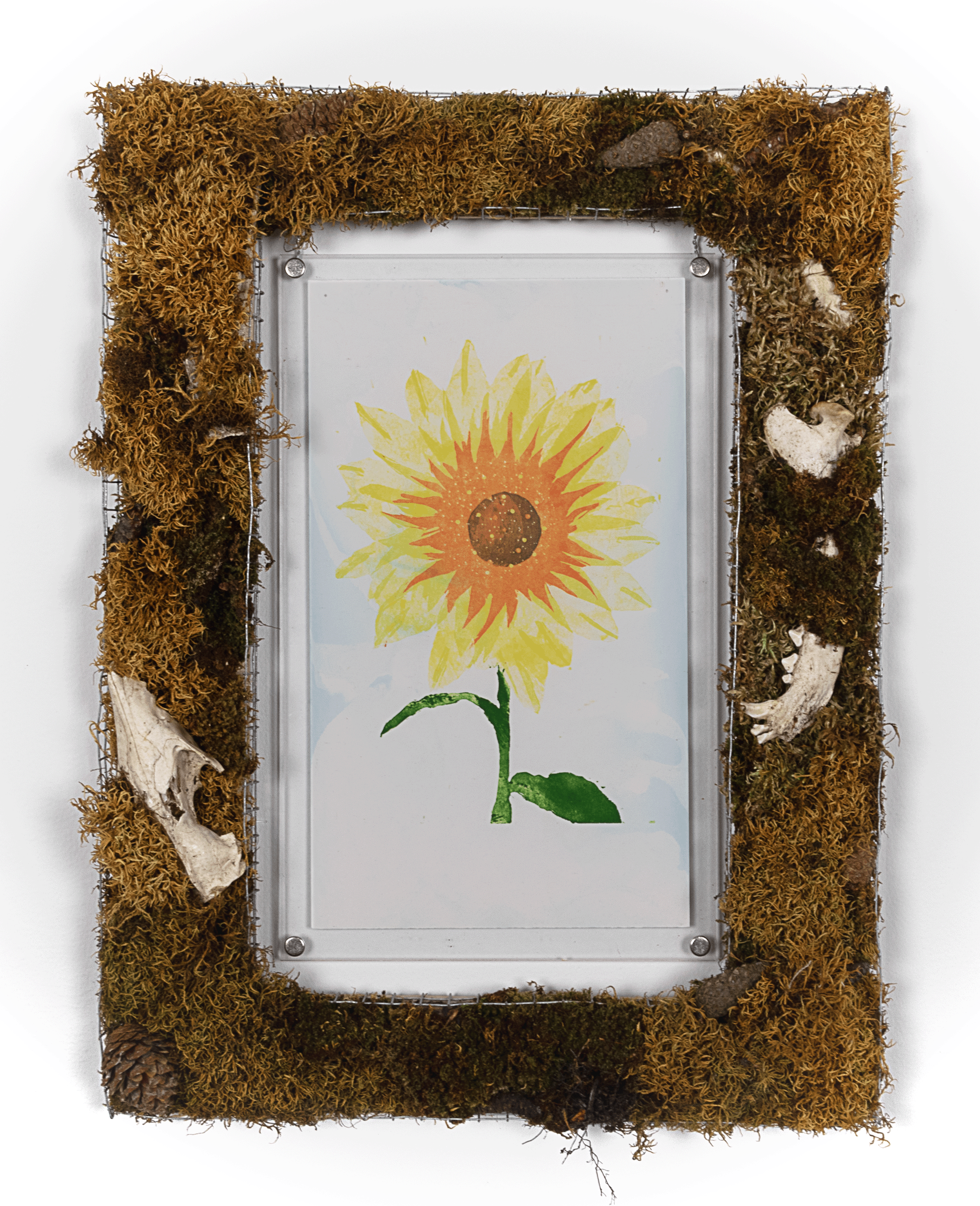Variation #15
By KS Lack
Print: Variated Edition 16/18
Frame: moss, bones,* pinecones, metal fencing
Ukraine is the second-largest country in Europe by size, surpassed only by Russia. It shares borders with seven countries: Belarus, Hungary, Moldova, Poland, Romania, Russia, and Slovakia. While the Carpathian Mountains in the west and the forests in the north loom large in Ukrainian mythology, much of the country consists of steppe—vast fields of sunflowers and wheat—beautiful landscapes that are now often scarred with bomb craters and landmines.
A decade of fighting has turned parts of eastern Ukraine into an environmental wasteland.(A) Russia’s deliberate destruction of industrial and chemical facilities has caused widespread pollution that threatens to spread beyond Ukraine’s borders. Over 30% of Ukraine’s protected habitats were damaged by Russia, even before the catastrophic destruction of the Kakhovka dam, which is itself an ecological disaster.(B) The country’s soil, air, and groundwater have been contaminated by oil and heavy metals. Ukraine’s famed black soil, vital for its agricultural productivity, is being poisoned.(C) Ukraine’s landscape and soil have been permanently altered by Russia’s continuous onslaught has permanently altered the landscape; the last time Europe saw environmental damage of this magnitude was during the trench warfare of World War I.(D)
More than eighty species of animals are now endangered and at risk of extinction within Ukraine. Bomb blasts are decimating bird populations. Dolphins and other marine life in the Black Sea are dying in extraordinary large numbers due to Russian sonar. The United Nations has called the damage caused by Russia a “toxic legacy for generations to come”, while the European Union others have labeled it an ecocide.
It will take decades to fully grasp the extent of the environmental devastation caused by Russia’s invasion. Ukraine is as much a land as it is a people. Russia is intent on annihilating both.
*All organic material was ethically sourced.
A) For more information on the Russo-Ukrainian war, see Variation #27.
B) For more information on the Kakhovka dam, see Variation #10.
C) For more on the importance of food and agriculture in Ukraine, see Variation #2, #11 and #17.
D) This effect is called Bombturbation, a term coined by J.P. Hupy and R.J. Schaetzl in 2006. Thank you to Beatrice Szymkowiak for introducing me to this concept.
Nature-based recovery needed for Ukraine’s damaged protected areas, Mongabay, 22 Dec 23.
In Ukraine, saving wildlife harmed by war, The Revelator, 21 Feb 23.
How the War in Ukraine Takes a Devastating Toll on Nature, Audubon Magazine, Fall 2023.
The toxic legacy of the Ukraine war, UN Environment Programme Report, 22 Feb 23.
Russia’s war on Ukraine: High environmental toll, European Parliament, 19 Jul 23.


